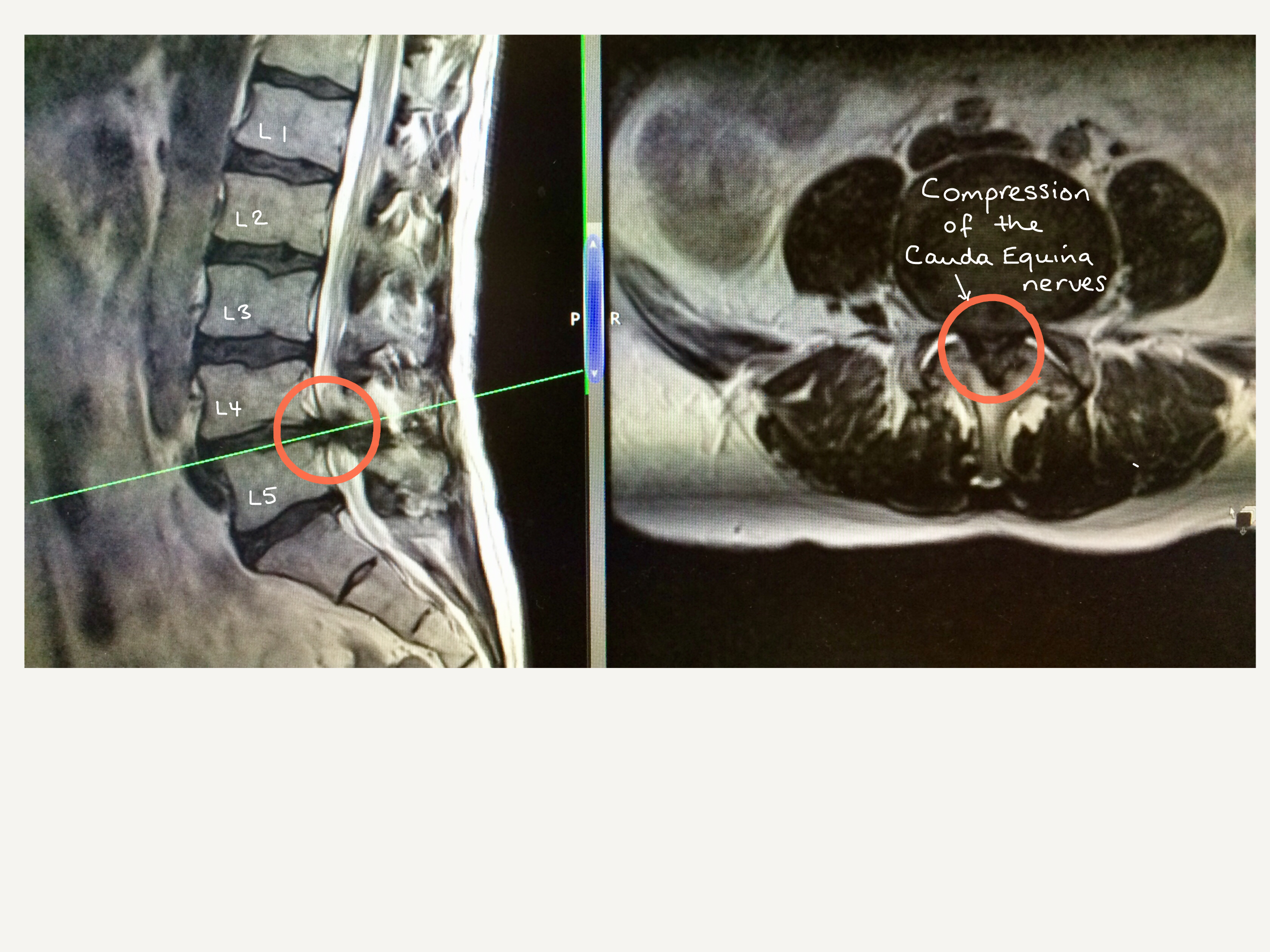What is the Cauda Equina?
Cauda equina is Latin for “horse’s tail’ and is the bottom part of the spinal cord. The spinal cord ends at the conus medullaris around the L1 level (the first lumbar vertebra) when it becomes the cauda equina: all the spinal nerves from L2 – L5, the sacral and coccygeal nerves.
These nerves supply power and sensation to the legs, bladder, bowel and sexual function. These nerves are very sensitive and are easily damaged by any abnormal pressure.
What is Cauda Equina Syndrome?
Cauda Equina Syndrome (CES) is a rare condition and is a surgical emergency. CES can cause double incontinence, loss of sexual function and paralysis. The symptoms can start as numbness or loss of sensation around the bottom area (back passage, perineum, testes and penis) and loss of sensation whilst passing urine/opening bowels or incontinence. It is caused by compression of the cauda equina nerves.
Cauda Equina Syndrome is a clinical diagnosis and can be confirmed or excluded by an urgent MRI scan (even if there is only a moderate amount of suspicion) – therefore urgent medical attention is required. If cauda equina syndrome is confirmed, emergency surgery is required as soon as possible (within 24-48 hours of onset of symptoms) in order to reverse and/or prevent progression of symptoms. The sooner the pressure is taken off the nerves the better the chances of recovery. The longer you have had the symptoms, the less likely there will be recovery of function however further progression will hopefully be prevented.
CES following a spinal operation can be caused by bleeding into the spinal canal or due to a leak of CSF (spinal fluid) after the surgery and this is also treated as an emergency and you will taken back to theatre.

The circled areas on the MRI scan above shows severe spinal stenosis at the L4/5 level causing compression of the cauda equina nerves. The image on the left is a side view of the spine and the image on the right is the corresponding cross-sectional view.

Symptoms
- Loss of sensation or numbness around the anus (back passage), perineum, testes, penis.
- Loss of sensation whilst passing urine and/or you don’t know when you have finished.
- Loss of sensation whilst opening bowels and/or you don’t now when you have finished.
- You become incontinent or you are unable to control either your bowels or bladder.
- Loss of normal erectile function or sexual function.
- Sudden increase/severe back pain.
- Sudden onset of sciatica (one or both legs).
- Loss of power in legs.
If you have any of the above symptoms you should be assessed urgently by a doctor to reassure you or to arrange an urgent MRI scan. The earlier you are seen after the start of these symptoms the better the chance of recovery is.
Who is at risk of Cauda Equina Syndrome?
Theoretically anyone is at risk of CES however remember, it is a very rare condition. If you have the following conditions you have an increased risk and it is sensible to be aware of the symptoms but not to worry about it:
- Severe or critical spinal stenosis
- A large disc prolapse/ bulge
- A congenitally small spinal canal


